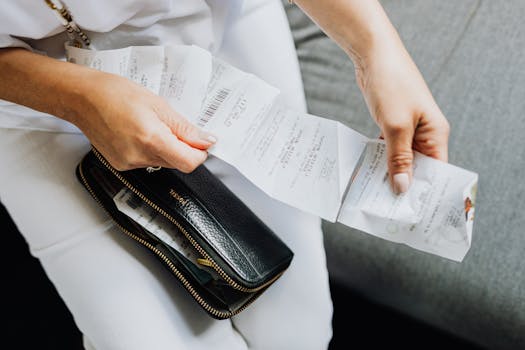Financial literacy
What Financial Independence Really Means and How to Reach It
Explore the real meaning of financial independence with hands-on steps, debt strategies, budget tips, and proven ways to invest for secure, lasting wealth you control.
Advertisement
Picture waking up without anxiety over monthly bills or feeling forced to work a job you dislike. For many, this is the first spark that draws them toward financial independence as a worthwhile pursuit.
This topic impacts nearly every part of daily living, from big goals like owning a home to small decisions such as treating yourself to dinner. Understanding financial independence can reshape both confidence and peace of mind around money.
Throughout this article, you’ll find hands-on frameworks, real-life examples, and clear steps you can start using today. Let’s unpack what financial independence really means and how you can get there, one actionable choice at a time.
Building a Solid Financial Foundation: The First Step to Independence
When you commit to financial independence, the initial goal is establishing a predictable and reliable foundation. That means clear budgets, tracked spending, and a trustworthy plan for every paycheck.
Sorting out these basics is like prepping the soil in a garden—skipping it means growth will be harder later. By laying out an intentional approach, you’ll avoid setbacks and surprises that can slow your progress.
Establishing a Budget: Practical Steps for Lasting Progress
Start by writing down all sources of income, large or small. Next, categorize monthly expenses, grouping them into needs, wants, and savings. This structure makes your priorities visible and actionable.
Create a habit of checking your budget weekly, catching creeping expenses immediately. For example, set an alert on your banking app that notifies you when you approach your spending limits. These small, repeated actions compound over time.
Share your budget plan with a partner or friend to increase accountability. When you announce, “I’m keeping $200 a month for emergencies,” it makes the goal more real and harder to ignore if you slip.
Emergency Savings: Your Safety Net in Practice
Open a separate savings account specifically for emergencies—never mix this with daily spending. Consider automating a small transfer after each paycheck to build the fund without temptation to use it.
Decide on your minimum threshold for security, such as $1,000 to cover unexpected car repairs. If you hit that target, raise it step by step toward three months’ worth of core expenses.
An emergency fund stops financial setbacks from derailing bigger goals. Instead of energy-draining panic about surprise costs, you’ll have a steady plan and self-trust to move forward.
| Financial Practice | How to Start | Expected Impact | Next Step |
|---|---|---|---|
| Budget Tracking | Use a simple spreadsheet | Identifies spending habits | Review weekly and cut 1 unnecessary expense |
| Emergency Fund | Open a dedicated savings account | Protects against surprise costs | Automate transfers after every payday |
| Debt Repayment | List all debts smallest to largest | Reduces stress and future interest | Make extra payments on smallest balance first |
| Income Diversification | Identify 1 side income idea | Adds protection and opportunities | Dedicate 2 hours per week to explore |
| Long-Term Investing | Open an IRA or 401(k) | Grows wealth automatically | Set up monthly contributions, no matter how small |
Setting Realistic Milestones: Turning Ambitions Into Tangible Actions
Translating the broad idea of financial independence into attainable milestones keeps you focused and motivated. The journey isn’t a straight line, but a series of checkpoints that add up to lasting change.
Start with one measurable goal: save $500, pay off a credit card, or invest in a retirement account. These small victories will stack up, fueling your drive to tackle larger objectives as your skill grows.
Continuous Progress: The Power of Steady Habit-Building
Habits shape your future more than isolated big decisions. Tracking each daily or weekly action builds visible momentum, helping you trust the process even when progress feels slow.
For instance, saying “I’ll review my spending every Sunday” is a script that pairs a routine with your financial independence pursuit. Pair a recurring calendar reminder with this step to keep it non-negotiable.
- Create a recurring savings transfer—simple automation prevents skipped steps and maintains progress even on hectic weeks.
- Schedule a monthly review with a friend—shared accountability turns goals into shared wins, boosting follow-through.
- Set an email alert for bill due dates—never pay a late fee again and protect your credit score by staying ahead of deadlines.
- Adjust your budget with every major life change—whether a new job or move, keep your financial map aligned to reality.
- Reward every milestone reached—celebrating progress keeps you motivated and creates positive associations with new money habits.
Each checklist item is a behavioral upgrade—one shift at a time makes the entire process feel manageable and rewarding to continue.
Evaluating Your Milestones: Feedback for Smarter Planning
Check your progress at the end of every month. Ask yourself, “Did this step move me closer to financial independence, or do I need to adjust my approach?” Use honest answers to refine your plan.
If you feel overwhelmed, break big milestones into micro-goals. For example, if saving $1,000 feels too far off, aim for $250 this month. Each win strengthens your track record.
- Track your savings rate as a percent of income—lets you spot patterns and tackle saving plateaus early.
- List debts by size and interest rate—paying off high-interest items first gives visible results and cuts total interest paid.
- Calculate your net worth every 90 days—seeing real movement boosts confidence and shows where to focus next.
- Record unexpected expenses in a separate log—reveals what needs to be added to your emergency fund.
- Note which habits make progress easy—replicate these in other areas for faster improvement.
Frequent, honest reassessment is your quality-control system—it ensures your money habits fit real results instead of wishful thinking.
Eliminating Debt Strategically: Freeing Up Future Cash Flow
Every dollar directed at expensive debt brings you closer to financial independence, unlocking opportunities and freeing up mental bandwidth for smarter investing decisions.
Using a methodical payoff structure, you can wipe out what holds you back and make real financial headway for the future.
Snowball and Avalanche Methods: Targeting Debt With Intention
The snowball payoff method starts with the smallest balance first. This approach creates fast psychological wins, helping you see debt shrink in a way that motivates further action.
The avalanche method targets the highest-interest debt first, which saves you the most money in the long run. Listing all balances and interest rates makes your priority list obvious and specific.
Someone committed to financial independence might say, “Once my $500 credit card is gone, I’ll put that payment toward the next highest card every month.” This behavior accelerates your results step by step.
Refinancing and Consolidation: Tools for Structuring Payments
Refinancing high-interest loans can cut costs quickly if your credit score supports it. This simple phone call or online form reduces the burden immediately and makes a long-term impact.
Debt consolidation merges multiple balances into a single payment, replacing scattered due dates with one manageable bill. This method simplifies tracking and often lowers your overall interest rate.
After consolidation, assign your monthly payment as a fixed cost in your baseline budget. This enables you to steadily shrink the debt even when life gets unpredictable.
Investing for Growth: Maximizing Wealth Through Compound Action
Compound growth transforms even small investments into significant wealth over time. By starting consistent contributions early, you give your money the best chance to multiply without added effort.
Long-term investing is a pillar of financial independence. Use automation and careful diversification, so you benefit from market gains while minimizing risk.
Retirement Accounts: Hands-Off Wealth Building
Opening an IRA or 401(k) is an automated way to build a financial safety net. Many employers offer matching contributions—this is free money, and claiming every dollar matters.
Maximize contributions when possible, but never delay starting for lack of large sums. Even $25 a month matters, especially when time is on your side and compounding gets to work.
Check your investment allocations annually and adjust to match your risk tolerance as goals change. Every review is a step toward financial independence that aligns with life’s twists and turns.
Diversification as Risk Management: Spreading Your Bets
Instead of putting all your dollars in one stock or industry, diversify your investments across categories. This approach shields your portfolio from sudden losses in any single area.
Diversification can mean combining low-cost index funds, real estate, and side hustles. Each income stream strengthens the stability of your overall plan and accelerates your progress toward independence.
Create a checklist: “I’ll add a new investment type every year and review performance each quarter.” Regular review increases confidence and prevents inertia from stalling your results.
Continuous Growth: Sustaining Financial Independence Year After Year
Throughout this article, you’ve explored practical ways to build, protect, and grow your finances. Each habit, from cutting debt to tracking milestones, feeds your journey toward financial independence.
No matter where you start, these principles stay relevant—your progress comes from regular attention rather than chasing quick fixes or fads. True independence shapes not only your finances but your daily peace and choices.
Think of every step—budgeting, eliminating debt, investing—as a brick in your foundation. By making each decision intentionally, you’re writing a financial story where independence is both the process and the reward.





